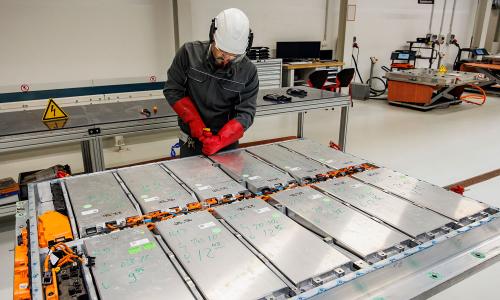From the cranes that help build our cities to the combines that harvest our crops, "off-highway" heavy diesel equipment is a major source of air pollution. These engines release more fine particulate matter than highway cars and trucks combined. And while pollution from highway vehicles has fallen over time, emissions from off-highway engines have continued to climb, in large part because these engines have not had to meet the stricter standards that highway vehicles face. A typical tractor emits as much soot as 250 average cars.
In 2003, UCS published Cleaning Up Diesel Pollution; Emissions from Off-Highway Engines by State. The report found that off-highway engines are responsible for a whopping 45 percent of the particulate matter from all mobile sources—equivalent to the emissions of more than 17 million new urban transit buses. These engines also release more than one-quarter of the smog-forming nitrogen oxides from all mobile sources—equal to the emissions of about 10.5 million new urban transit buses. Cleaning them up will require a mix of better pollution standards for new diesel engines, replacing diesel with cleaner fuel alternatives, and the installation of pollution controls on all diesel engines in use.
Advocating stronger emissions standards
UCS has been working in coalition to build support for stronger emissions standards for new engines. In 2004, the EPA finalized a new rule requiring automakers to clean up these engines. The potential public health gains from this proposal are staggering. By 2030, the EPA estimates its proposal will prevent nearly 10,000 deaths every year from such causes as asthma, heart disease, and cancer.
Though the agency's proposal is strong, it is far from perfect, and there are continued threats to weaken it. UCS is working in coalition to strengthen the rule to ensure all types of off-highway mobile sources—including very small engines, very large engines, trains, and ships—are cleaned up as quickly as the technology allows.



